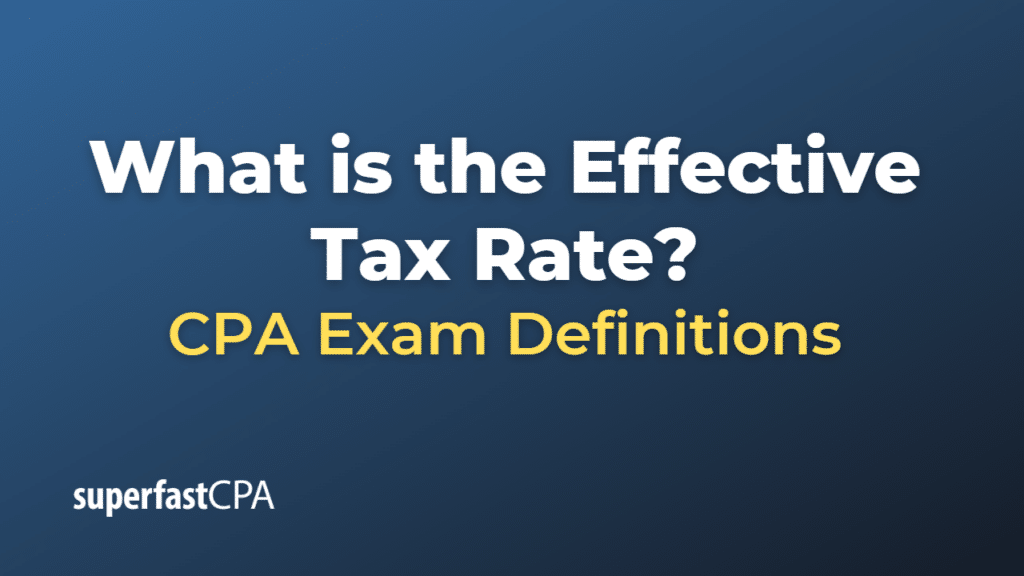Effective Tax Rate
The effective tax rate is a measure of a taxpayer’s total tax liability relative to their total income. It’s essentially the average rate at which an individual or corporation is taxed.
The effective tax rate is calculated by dividing the total tax paid by the total income earned. Unlike the marginal tax rate, which applies to the last dollar of income earned, the effective tax rate reflects the actual amount of tax paid as a percentage of income, taking into account all deductions and credits.
The formula to calculate the effective tax rate is:
\(\text{Effective Tax Rate} = \frac{\text{Total Tax Paid}}{\text{Total Income}} \)
This can sometimes differ significantly from the individual’s or corporation’s marginal tax rate due to factors like tax credits, deductions, and different types of income being taxed at different rates.
For instance, in a progressive tax system, like that of the United States, an individual’s income is taxed at increasing rates (these increments are called tax brackets). However, because of deductions and credits, the percentage of total income that ends up being paid to the government (i.e., the effective tax rate) can often be less than the rate of the highest bracket into which their income falls (i.e., the marginal tax rate).
Example of the Effective Tax Rate
Let’s say John, a single filer, earns $75,000 in taxable income in a year. Let’s also assume a simplified version of a progressive tax system where the tax rates are as follows:
- 10% on income up to $10,000
- 20% on income from $10,001 to $40,000
- 30% on income above $40,000
John’s tax calculation would look like this:
- He pays 10% on the first $10,000 = $1,000
- He pays 20% on the next $30,000 = $6,000
- He pays 30% on the remaining $35,000 (his income over $40,000) = $10,500
His total tax paid is therefore $1,000 + $6,000 + $10,500 = $17,500.
To find his effective tax rate, we would divide his total tax paid by his total income:
\(\text{Effective Tax Rate} = \frac{\text{Total Tax Paid}}{\text{Total Income}} \)
\(= \frac{\$17,500}{\$75,000} = \text{0.2333 or 23.33%} \)
So, even though John falls into the 30% tax bracket, his effective tax rate is only 23.33% due to the progressive nature of the tax rates.
Please note: This is a simplified example. Real-world tax calculations can be much more complex due to various deductions, tax credits, and different types of income being taxed at different rates.













